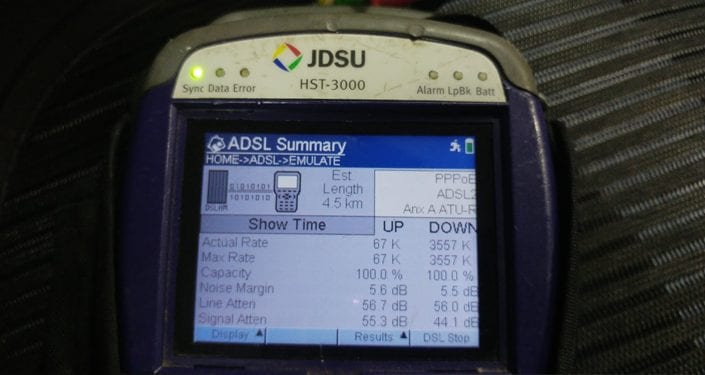We all know very well that one of the most important aspects of broadband technologies is that they can be adapted to the general state and basic characteristics of the available infrastructure. However, recently, a UK based internet company used Wet Sting simply to beam internet at 3.5 Mbps.
Someone Used “Wet String” To Beam Internet At 3.5 Mbps
One of the most important aspects of broadband technologies is that they can be adapted to the general state and basic characteristics of the available infrastructure. The problem is that this does not always favour the user, and when a minimum failure arises, the first symptom is the loss of speed.
The ADSL (Asymmetric digital subscriber line) is especially known for this behaviour and indicates an old joke that might work on something as simple as a wet rope. Adrian Kennard of the supplier Andrews & Arnold in the United Kingdom decided to put that hypothesis to the test and obtained better results than expected.
As with other connectivity systems, ADSL (Asymmetric digital subscriber line) maintains a complex love-hate relationship with users. On the one hand, there are those who appreciate its stability and wide availability (thanks to its operation on telephone lines), and then we find those who wish to set fire to each pole at their reach due to the intermittences, the cuts, and the low speeds.
While I detest all providers equally (there are plenty of reasons), the truth is that ADSL (Asymmetric digital subscriber line) technology was (and is) the one that gave me the least trouble. In the minds of many experts, ADSL (Asymmetric digital subscriber line) is an almost obsolete option, but it would be absurd not to appreciate its simplicity. In fact, an old joke suggests that it could work with just a wet string.
However, now it seems to be true. As Adrian Kennard of the provider Andrews & Arnold in the United Kingdom published in his personal blog the experiment carried out by one of his technicians.
Two meters of rope, a little salt water to keep it moist, and the result was a downlink at 3.55 megabits per second of speed. The upstream was only 67 kbps, and the slightest touch on the string could ruin the link, but the point is that this old joke was more solid than previously thought. Of course, this experiment is not the only one of its kind: Ten years ago, someone managed to establish a T1 line using barbed wire.
The jokes did not take long to appear on the Web. Some comments on Reddit indicate that the wet string link even works better than the technology available in certain rural areas. No matter how “advanced” a country is, at the end of the day everyone has their own connectivity nightmares to share.
So, what do you think about this? Simply share all your views and thoughts in the comment section below.



